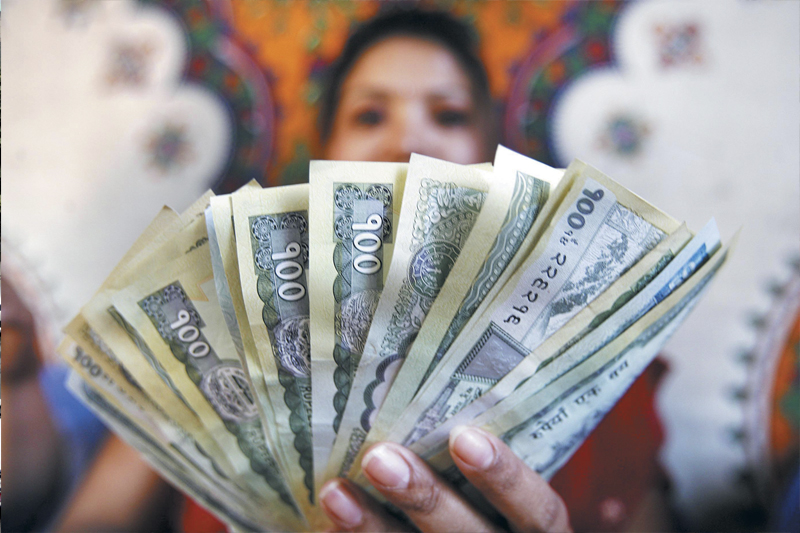Rupee weakens by one per cent
Kathmandu, June 24
Nepali rupee has tumbled to over three-and-a-half-month low against the US dollar, as the Indian rupee, with which the country’s currency is pegged, came under pressure after the UK voted to leave the European Union.
Nepali rupee, which closed at 107.96 against the greenback today, will lose Rs 1.04, or almost one per cent, by the time markets open on Saturday to trade at 109 per dollar, shows the reference rate of Nepal Rastra Bank.
Nepali rupee last fell to this level on March 2, when exchange rate stood at 109.13.
Nepali rupee comes under pressure whenever Indian currency starts taking a beating, as Nepali rupee is pegged to Indian currency at 1.6.
Indian rupee today opened for trading at 67.90 and fell as much as 1.4 per cent during the afternoon trading, the steepest since November 2013. The Indian rupee has depreciated by 2.6 per cent in 2016.
“A so-called Brexit brings uncertainties for global growth that could curb appetite for assets in emerging markets like India and exacerbate losses for the rupee, already Asia’s worst-performing currency this year,” Bloomberg said, adding, “The UK leaving the EU could also worsen a slump in Indian exports given the nation’s $14 billion trading ties with Britain.”
However, Reserve Bank of India Governor Raghuram Rajan, in a statement, said the central bank will intervene at an appropriate time and when necessary. He also said India has enough foreign exchange reserves to support the rupee when required, as per LiveMint.
As part of market intervention strategy, state-run Indian banks were seen selling dollars on behalf of the RBI, Bloomberg quoted two Mumbai-based traders as saying.
But volatility in Indian currency is likely to continue because ‘Indian rupee tends to under-perform in periods of weak global risk appetite’.
If Indian currency comes under pressure, the value of Nepali rupee will further depreciate.
A weak currency actually benefits recipients of remittance here, as they will get more Nepali currency while exchanging money sent by Nepalis working abroad.
A weak currency also provides leverage to exporters, as foreign buyers will get more of local currency when they exchange dollars to purchase goods or services here.
But this theory does not always apply in Nepal where prolonged hours of power cuts and other structural problems work as disincentives for exporters. Hence, weak currency has not been able to give a lift to Nepali exports.
While there is little improvement on exports front, imports have continued to rise because of the nation’s status as ‘net importing country’.
This means a weak currency will only stoke inflation in a country like Nepal because importers will have to pay more of domestic currency while purchasing foreign goods priced in US dollars.
Gold, silver sparkle
KATHMANDU: The price of precious metals soared to a near three-year high on Friday on the news of Britain voting to leave the European Union in Thursday’s referendum.
Gold price surged by a whopping Rs 3,000 or 5.36 per cent to Rs 59,000 per tola, while silver was priced at Rs 820 a tola, which was Rs 30 or 3.8 per cent higher than the rate it was being traded at on Thursday.
According to the Federation of Nepal Gold and Silver Dealers’ Associations, the demand for precious metals has also risen in the international markets in the recent days as the US central bank has hinted that it would not raise the rates until September.






